dept | resources | glossary | credits | feedback | help | search |
|||||
 |
|||||

|
|||||
 |
|||||
| The Harriet and Robert Heilbrunn Department of Population and Family Health |
|||||
 |
|||||
| intro | definitions | international legal instruments | basic facts | standard responses | major actors | conclusion | exam |
|||||
Standard responses to a humanitarian crisis – the emergency phaseIn this section you will understand the Sphere Project, international initiative aimed at improving the effectiveness and accountability of disaster response, and the minimum standards in humanitarian response. The Sphere ProjectThe Sphere Project is an international initiative aimed at improving the effectiveness and accountability of disaster response. The Sphere Humanitarian Charter and Minimum Standards in Disaster Response set out for the first time what people affected by disasters have a right to expect from humanitarian assistance. The project is based on two core beliefs: first, that all possible steps should be taken to alleviate human suffering arising out of calamity and conflict; second that those affected by disaster have a right to life and dignity and therefore a right to assistance. However, a major limitation of this effort is that it is entirely voluntary. The only enforcement is through the expectation that humanitarian actors have of one another that assistance will be provided in accord with Sphere guidelines. To date over 400 organizations in over 80 countries all around the world have contributed to the Minimum Standards and key indicators.
|
|||||
|
A Question for Further Reflection |
These standards are voluntary; i.e., there is neither a requirement that organizations meet them nor any mechanism to ensure that standards are met. Do you think organizations providing services to conflict-affected people should be required to demonstrate compliance to these standards?
|
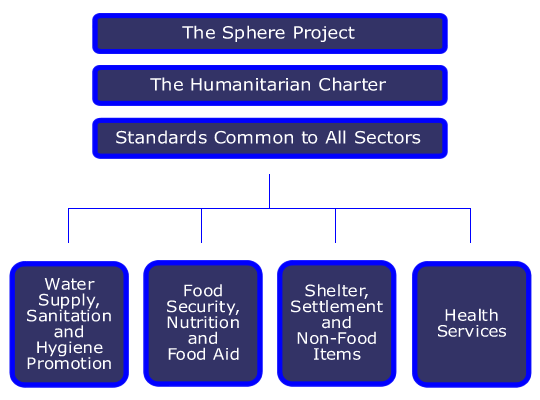
Common standards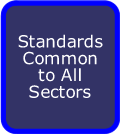
1. Participation
The disaster-affected population actively participates in the assessment,
design, implementation, monitoring and evaluation of the assistance
program.
2. Initial assessment
Assessments provide an understanding of the disaster situation
and a clear analysis of threats to life, dignity, health and livelihoods
to determine, in consultation with the relevant authorities, whether
an external response is required and, if so, the nature of the response
3. Response
A humanitarian response is required in situations where the relevant
authorities are unable and/or unwilling to respond to the protection
and assistance needs of the population on the territory over which
they have control, and when assessment and analysis indicate that
these needs are unmet
4. Targeting
Humanitarian assistance or services are provided equitably and
impartially, based on the vulnerability and needs of individuals
or groups affected by disaster
5. Monitoring
The effectiveness of the program in responding to problems is
identified and changes in the broader context are continually monitored,
with a view to improving the program, or to phasing it out as
required
6. Evaluation
There is a systematic and impartial examination of humanitarian
action, intended to draw lessons to improve practice and policy
and to enhance accountability
7. Aid worker competencies and responsibilities
Aid workers possess appropriate qualifications, attitudes and experience
to plan and effectively implement the appropriate program
8. Supervision, management and support of personnel
Aid workers receive supervision and support to ensure effective
implementation of the humanitarian assistance program.
Water and Sanitation standards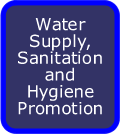
1. Hygiene Promotion
All facilities and resources provided reflect the vulnerabilities,
needs and preferences of the affected population. Users are involved
in the management and maintenance of hygiene facilities where appropriate
2. Water Supply
Water supply standard 1: access and water quantity - All people have safe and equitable access to a sufficient quantity
of water for drinking, cooking and personal and domestic hygiene.
Public water points are sufficiently close to households to enable
use of the minimum water requirement
Water supply standard 2: water quality - Water is palatable, and of sufficient quality to be consumed and used for personal and domestic hygiene without causing significant risk to health
Water supply standard 3: water use facilities and goods - People have adequate facilities and supplies to collect, store and use sufficient quantities of water for drinking, cooking and personal hygiene, and to ensure that drinking water remains safe until it is consumed
3. Excreta Disposal
Excreta disposal standard 1: Access to, and numbers of, toilets - People have adequate numbers of toilets, sufficiently close to
their dwellings, to allow them rapid, safe and acceptable access
at all times of the day and night
Excreta disposal standard 2: Design, construction and use of toilets - Toilets are sited, designed, constructed and maintained in such a way as to be comfortable, hygienic and safe to use
4. Vector Control
Vector control standard 1: Individual and family protection - All disaster-affected people have the knowledge and the means
to protect themselves from disease and nuisance vectors that are
likely to represent a significant risk to health or well-being
Vector control standard 2: Physical, environmental and chemical protection measures - The numbers of disease vectors that pose a risk to people’s health and nuisance vectors that pose a risk to people’s well-being are kept to an acceptable level
Vector control standard 3: Chemical control safety - Chemical vector control measures are carried out in a manner that ensures that staff, the people affected by the disaster and the local environment are adequately protected, and avoids creating resistance to the substances used
5. Solid Waste Management
Solid Waste Management standard 1: Collection and disposal - People have an environment that is acceptably uncontaminated
by solid waste, including medical waste, and have the means to dispose
of their domestic waste conveniently and effectively.
6. Drainage
Drainage standard 1: Works - People have an environment in which the health and other risks
posed by water erosion and standing water, including storm water, floodwater, domestic wastewater and wastewater from medical facilities,
are minimized
Food Security, Nutrition and Food Aid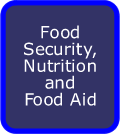
Assessment and analysis standard 1: Food security - Where people are at risk of food insecurity, program decisions are based on a demonstrated understanding of how they normally access food, the impact of the disaster on current and future food security, and hence the most appropriate response
Assessment and analysis standard 2: Nutrition - Where people are at risk of malnutrition, program decisions are based on a demonstrated understanding of the causes, type, degree and extent of malnutrition, and the most appropriate response
Food security standard 1: General food security - People have access to adequate and appropriate food and non-food items in a manner that ensures their survival, prevents erosion of assets and upholds their dignity
Food security standard 2: Primary production - Primary production mechanisms are protected and supported
Food security standard 3: Income and employment - Where income generation and employment are feasible livelihood strategies, people have access to appropriate income-earning opportunities, which generate fair remuneration and contribute towards food security without jeopardizing the resources on which livelihoods are based.
Food security standard 4: Access to markets - People’s safe access to market goods and services as producers, consumers and traders is protected and promoted
General nutrition support standard 1: All groups - The nutritional needs of the population are met
General nutrition support standard 2: At-risk groups - The nutritional and support needs of identified at-risk groups are met
Correction of malnutrition standard 1: Moderate malnutrition - Moderate malnutrition is addressed
Correction of malnutrition standard 2: Severe malnutrition - Severe malnutrition is addressed
Correction of malnutrition standard 3: Micronutrient malnutrition - Micronutrient deficiencies are addressed
Food aid planning standard 1: Ration planning - Rations for general food distributions are designed to bridge the gap between the affected population’s requirements and their own food resources
Food aid planning standard 2: Appropriateness and acceptability - The food items provided are appropriate and acceptable to recipients and can be used efficiently at the household level
Food aid planning standard 3: Food quality and safety - Food distributed is of appropriate quality and is fit for human consumption
Food aid management standard 1: Food handling - Food is stored, prepared and consumed in a safe and appropriate manner at both household and community levels
Food aid management standard 2: Supply chain management - Food aid resources (commodities and support funds) are well managed, using transparent and responsive systems
Food aid management standard 3: Distribution - The method of food distribution is responsive, transparent, equitable and appropriate to local conditions
Shelter, Settlement and Non-Food Items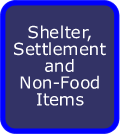
Shelter and settlement standard 1: Strategic planning - Existing shelter and settlement solutions are prioritised through the return or hosting of disaster-affected households, and the security, health, safety and well-being of the affected population are ensured
Shelter and settlement standard 2: Physical planning - Local physical planning practices are used where possible, enabling safe and secure access to and use of shelters and essential services and facilities, as well as ensuring appropriate privacy and separation between individual household shelters
Shelter and settlement standard 3: Covered living space - People have sufficient covered space to provide dignified accommodation. Essential household activities can be satisfactorily undertaken, and livelihood support activities can be pursued as required
Shelter and settlement standard 4: Design - The design of the shelter is acceptable to the affected population and provides sufficient thermal comfort, fresh air and protection from the climate to ensure their dignity, health, safety and well-being
Shelter and settlement standard 5: Construction - The construction approach is in accordance with safe local building practices and maximizes local livelihood opportunities
Shelter and settlement standard 6: Environmental impact - The adverse impact on the environment is minimized by the settling of the disaster-affected households, the material sourcing and construction techniques used
Non-food items standard 1: Clothing and bedding - The people affected by the disaster have sufficient clothing, blankets and bedding to ensure their dignity, safety and well-being
Non-food items standard 2:Personal hygiene - Each disaster-affected household has access to sufficient soap and other items to ensure personal hygiene, health, dignity and well-being
Non-food items standard 3: Cooking and eating utensils - Each disaster-affected household has access to cooking and eating utensils
Non-food items standard 4: Stoves, fuel and lighting - Each disaster-affected household has access to communal cooking facilities or a stove and an accessible supply of fuel for cooking needs and to provide thermal comfort. Each household also has access to appropriate means of providing sustainable artificial lighting to ensure personal security
Non-food items standard 5: Tools and equipment - Each disaster-affected household responsible for the construction or maintenance and safe use of their shelter has access to the necessary tools and equipment
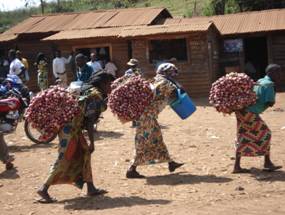
South Kivu, Democratic Republic of Congo (Photo: Elizabeth Sung)
Health Services
PART I: Health systems and infrastructure standards
Health systems and infrastructure standard 1: Prioritizing health services - All people have access to health services that are prioritized to address the main causes of excess mortality and morbidity
Health systems and infrastructure standard 2: Supporting national and local health systems - Health services are designed to support existing health systems, structures and providers
Health systems and infrastructure standard 3: Coordination - People have access to health services that are coordinated across agencies and sectors to achieve maximum impact
Health systems and infrastructure standard 4: Primary health care - Health services are based on relevant primary health care principles
Health systems and infrastructure standard 5: Clinical services - People have access to clinical services that are standardized and follow accepted protocols and guidelines
Health systems and infrastructure standard 6: Health information systems - The design and development of health services are guided by the ongoing, coordinated collection, analysis and utilization of relevant public health data
PART II: Control of communicable diseases standards
Control of communicable diseases standard 1: Prevention - People have access to information and services that are designed to prevent the communicable diseases that contribute most significantly to excess morbidity and mortality
Control of communicable diseases standard 2: Measles prevention - All children aged 6 months to 15 years have immunity against measles
Control of communicable diseases standard 3: Diagnosis and case management - People have access to effective diagnosis and treatment for those infectious diseases that contribute most significantly to preventable excess morbidity and mortality
Control of communicable diseases standard 4: Outbreak preparedness - Measures are taken to prepare for and respond to outbreaks of infectious diseases
Control of communicable diseases standard 5: Outbreak detection, investigation and response - Outbreaks of communicable diseases are detected, investigated and controlled in a timely and effective manner
Control of communicable diseases standard 6: HIV/AIDS - People have access to the minimum package of services to prevent transmission of HIV/AIDS
PART III: Control of non-communicable diseases standards
Control of non-communicable diseases standard 1: Injury - People have access to appropriate services for the management of injuries
Control of non-communicable diseases standard 2: Reproductive health - People have access to the Minimum Initial Service Package (MISP) to respond to their reproductive health needs
Control of non-communicable diseases standard 3: Mental and social aspects of health - People have access to social and mental health services to reduce mental health morbidity, disability and social problems
Control of non-communicable diseases standard 4: Chronic diseases - For populations in which chronic diseases are responsible for a large proportion of mortality, people have access to essential therapies to prevent death
Standard responses in the post emergency phase
In the post-emergency phase, humanitarian efforts seek to maintain the health and well-being of the population through the continuation of the response described in the emergency phase section and through expanding services to include the following:
Enhancement / extension (improved coverage, greater depth of services) of the interventions described for the emergency phase response, plus:
-Family tracing and reunification
-Social services- schools, community/youth centers
-Community health programs
-Continuation of preventative health services for incoming refugees
-Greater participation by “beneficiary” population in all aspects of programming
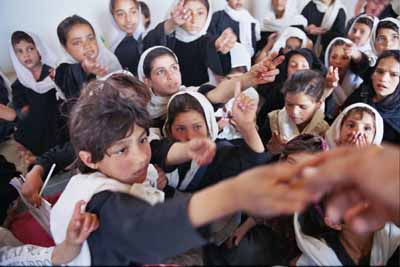
Girls in school in Afghanistan.

Two Afghan Boys
Photo: Hiram A. Ruiz
![]()
![]()


